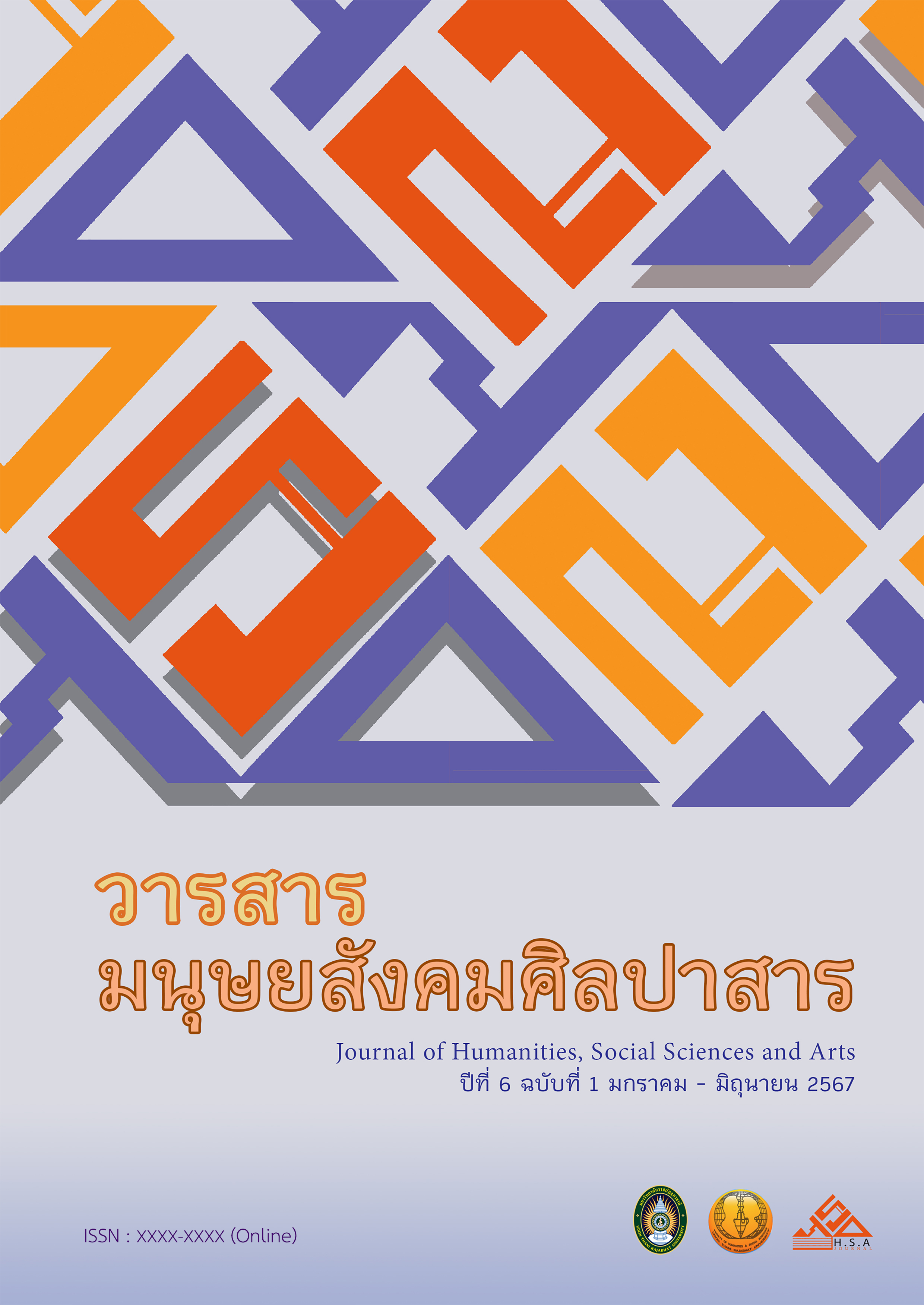A STUDY OF SATISFACTION OF USERS ON METAVERSE DEVELOPMENT OF ANCIENT TEXTILE MUSEUM AT SURINDRA RAJABHAT UNIVERSITY
Main Article Content
Abstract
This research aimed to develop a metaverse of the ancient textile museum at Surindra Rajabhat University and to study users’ satisfaction with the metaverse development of the ancient textile museum at Surindra Rajabhat University. The population and samples were 30 students who enrolled in the Beauty of Life course for the academic year 2/2023. They were obtained by purposive sampling that used research tools, including 1) the metaverse of the ancient textile museum at Surindra Rajabhat University and 2) questionnaires. The metaverse was developed through a brainstorming process from experts and personnel of the Office of Arts and Culture, a total of 12 people, using the system development process by ADDIE. The research data was analyzed using descriptive statistics including frequency, percentage, mean, and standard deviation. The research results found that the metaverse can be accessed through a Special.io website. The usable space area was on the outside and had external links for continuous learning. The inside building included 25 items of fabric knowledge and things related to ancient fabric. The objects in the building were 3D models and pictures. There was music and the character could move through the keyboard, mouse, or VR headset. Moreover, there was an interactive user and the metaverse. The study on users’ satisfaction with the metaverse found that the overall level of satisfaction was at a high level. As a result of the development, the metaverse can help users access lifelong learning through the Internet network and promote pride in local wisdom for users.
Downloads
Article Details
References
ณัฐนนท์ เกษตรเอี่ยม, ภาสกร เรืองรอง, ธีรชัย เรืองบัณฑิต. (2567). การพัฒนาบทเรียนออนไลน์รูปแบบจักรวาลนฤมิตร่วมกับกระบวนการจัดการเรียนรู้เชิงรุก Active Learning รายวิชาออกแบบและเทคโนโลยี เรื่องเทคโนโลยีแก้ปัญหา ของนักเรียนระดับชั้นมัธยมศึกษาปีที่ 3. Journal of Education and Innovation, 26(1), 152-162.
บุญชม ศรีสะอาด. (2554). การวิจัยเบื้องต้น. พิมพ์ครั้งที่ 9. กรุงเทพฯ: สุวีริยาสาส์น.
พระสมพร นามอินทร์. (2566). การปรับใช้เมตาเวิร์สเพื่อกระตุ้นกระบวนการเรียนรู้ธรรมศึกษาในยุคดิจิทัล. วารสารคอมพิวเตอร์และเทคโนโลยีสร้างสรรค์, 1(3), 26-32.
รวิน ระวิวงศ์. (2565). แนวทางการพัฒนาแพลตฟอร์มโลกเสมือน (Metaverse) เพื่อยกระดับแหล่งเรียนรู้และการบริการแห่งอนาคต. วารสารรัฏฐาภิรักษ์, 64(3), 32-41.
ราชกิจจานุเบกษา. (2562). พระราชบัญญัติ พื้นที่นวัตกรรมการศึกษา พ.ศ. 2562. เล่มที่ 136 ตอนที่ 56 ก. 102 - 120. 30 เมษายน 2562.
สุปราณี ชมจุมจัง. (2566). นวัตกรรมการสอนศิลปศึกษาโลกเสมือนจริง: Metaverse. วารสารสันติศึกษาปริทรรศน์ มจร, 11(7), 2978-2988.
สุรพล บุญลือ. (2565). เมตาเวิร์สสำหรับการศึกษา: การเชื่อมต่อระหว่างจักรวาลนฤมิตกับโลกความจริงของการเรียนรู้ที่จะก่อให้เกิดการเรียนรู้แบบดื่มด่ำ. วารสารวิชาการ มหาวิทยาลัยนอร์ทกรุงเทพ, 11(1), 9-16.
เอสเอเอส. (ม.ป.ป). การเปลี่ยนแปลงทางดิจิทัลนิยามและความสำคัญ. สืบค้นเมื่อวันที่ 10 กุมภาพันธ์ 2567 จาก https://www.sas.com/th_th/insights/data-management/digital-transformation. html


